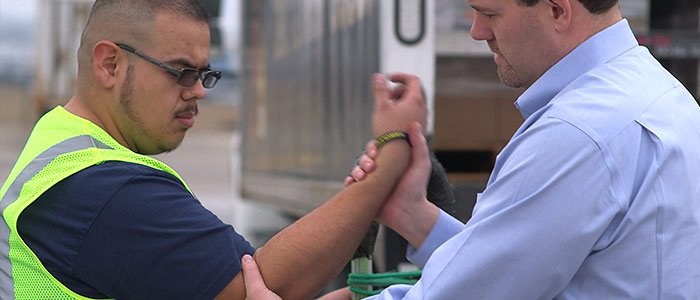By John Ratelle
Senior Vice President of Brokerage Management, Fit For Work
Cost of risk is a critical measurement for businesses looking to assess and manage risk against growth over time. But despite its importance, many incorrectly assume that cost of risk only includes surface-level aspects like insurance premiums, retained losses, and administrative costs. And while those three areas certainly play a role, there is much more to it than that when looking to assess your total cost of risk (TCOR).
What Is Total Cost of Risk?
Total cost of risk details the complete cost incurred by an organization in managing its risk beyond the simple cost of insurance claims and premiums. In other words, it is the total cost of all the items a business is responsible for with regard to insurance, workers’ compensation, and various operational and administrative costs.
Over time, TCOR can provide a reliable form of measurement for assessing how risk-related costs are evolving relative to a business’s overall growth.
Why Is Total Cost of Risk Important?
Understanding total cost of risk is important because if your business is only focusing on insurance premiums as a means of quantifying risk, then you are likely neglecting other costs that you may have more control over. Understanding the full picture of TCOR helps uncover areas where your organization may be able to save money.
The benefit of decreasing premiums is negated if an organization sees an increase in indirect costs of claims and administrative costs. True cost reduction is most impacted by lowering indirect costs, which can often end up costing more than the actual claim itself. TCOR helps identify these costs.
Who Is Total Cost of Risk Useful For?
Several different parties can make valuable use of TCOR.
It helps risk management professionals perform accurate analyses of their businesses’ complete cost structure and is used to help allocate expenses throughout the organization and to determine ROI.
Total cost of risk also helps C-suite executives accurately budget costs and review increases or decreases within their cost structure.
Operational managers, production managers, safety as well as human resources professionals are impacted by employee injuries.
As for brokerage and risk service providers, TCOR can be used to more effectively demonstrate the quantifiable impact of their services to buyers.
Factors of Total Cost of Risk
Now that we know what TCOR is and why it’s important, let’s take a look at everything that goes into it. Generally speaking, we break total cost of risk down into five areas: retained losses, claims management costs, risk transfer premiums, collateral costs, and volatility risk.
- Retained losses refer to the total losses for each year (don’t be fooled by what you might see in annual loss reports). This can include costs within deductible, costs within retention, and costs for self-insured (bare) losses.
- Claims management costs are those paid to help handle workers’ compensation claims. As the frequency of claims is lowered, so too is the cost of claims management.
- Risk transfer premiums are those paid to underwriters, including policy premiums, taxes, fees, and possible retail and wholesale broker commissions. As losses decrease and become more predictable, less premium is required.
- Collateral costs within a loss-sensitive program refer to the expected loss payments that are collateralized by LOC or other instruments. As expected, losses decrease, so do these costs.
- Volatility risk refers to the fact that when companies have volatility in their annual losses, the carrier typically adds a charge to help protect themselves from an unexpected spike in losses.
- Operational costs takes into account the cost to replace injured workers, impact on productivity, additional administrative costs to address replacement workers, expenses to prevent and mitigate employee injuries
How to Optimize TCOR
With so many different factors at play, optimizing your total cost of risk can be a complex challenge. It ultimately comes down to balancing retention and risk control with premium – and what drives your premium is your program design. Controlling your TCOR is primarily about understanding what is driving your losses and what steps you can take to manage and respond to those trends.
Take Control of Your TCOR with Fit For Work
Fit For Work’s risk prevention solutions pair our injury prevention services with the resources of some of the nation’s largest insurance carriers. This allows us to gain accurate insights into which risks are most present within a given workplace and, more importantly, which turnkey solutions can be implemented to dramatically mitigate them.
Incorporating insurance into the injury prevention process equips our team and yours with a world of data and information previously disconnected from safety operations. This enables us to more effectively identify opportunities to reduce risk and to measure success in terms of your ROI.
Because we are already interacting with your employees in their working environments, we are able to use this data to help diagnose the most effective approaches to improving safety and reducing workers’ comp claims.





